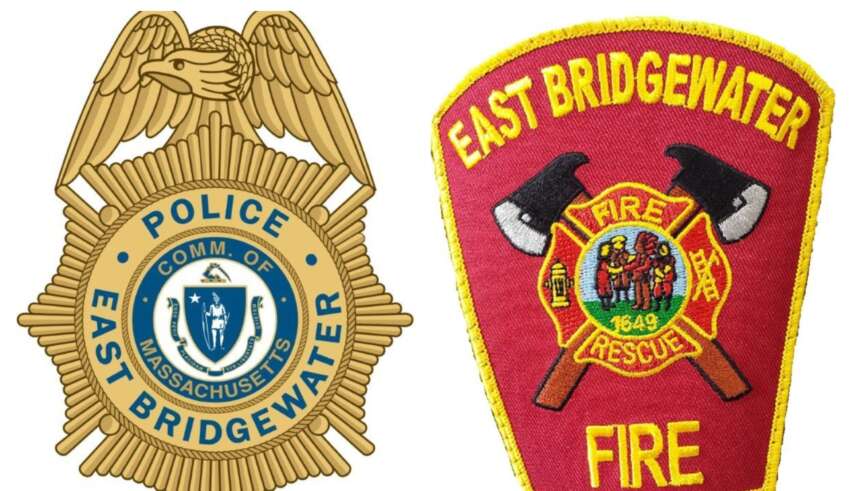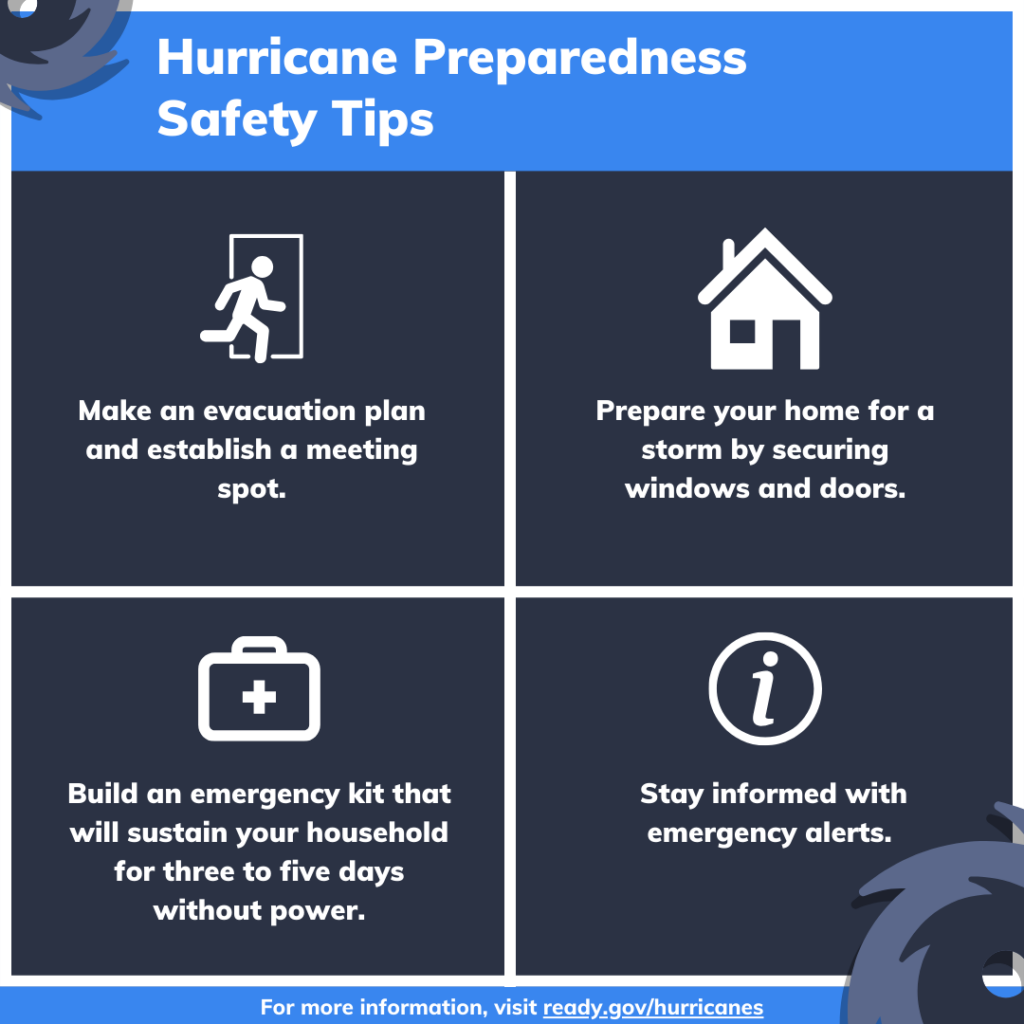

Fire Chief Timothy Harhen, Police Chief Michael Jenkins, and the East Bridgewater Fire and Police Departments would like to share the following safety and preparedness tips this hurricane season.
While the Atlantic Hurricane season is from June 1 to Nov. 30, hurricanes have been more prominent in Massachusetts during the summer months.
Hurricanes are a rotating high-pressure tropical storm that comes with high winds, heavy rain, storm surges, inland flooding, and rip currents.
The East Bridgwater Fire and Police Departments would like to share the following information from the Massachusetts Emergency Management Agency (MEMA) this hurricane season:
What to Do Before an Emergency Strikes:
- Stay informed and remain informed throughout the event.
- Community members should have multiple methods of staying informed through emergency alerts. Learn more about types of alerting and information tools including the Emergency Alert System, Wireless Emergency Alerts, NOAA Weather Radio, social and traditional news media, and local notification systems.
- Create an emergency plan with your family. Each family is different, and plans should be tailored to your needs.
- Prepare your home by securing outdoor furniture, doors, and windows, and keeping drains clear of debris.
- Consider cutting weak branches and trees that could fall on your house. Make sure there’s nothing that could blow around during the storm and damage your home, and move bikes, lawn furniture, grills, propane tanks, and building material inside or under the shelter. Cover windows and doors by using storm shutters or pieces of plywood. Secure all doors on your property and find a safe location for your vehicle.
- Remember, in the event of an emergency, call 911.
Make an Emergency Plan: Have an emergency plan for how your family would communicate, evacuate, and shelter in place should there be an emergency. An emergency plan should address the specific needs of all family members and those you are responsible for.
Steps to making an emergency plan include:
- Discussing the questions below with your family, friends, or household:
- How will I receive emergency alerts and warnings?
- What is my family/household communication plan?
- Establishing meeting locations, in the event you and your family become separated from one another during an emergency.
- Establishing an evacuation plan and a shelter-in-place plan. Emergency officials may require you to leave the area or stay within your home based on the severity of the event.
- Consider specific needs for everyone in your household, including seniors, children, individuals with access and functional needs, and pets. Dietary needs, medical needs including prescriptions and equipment, disabilities or access and functional needs including devices and equipment, and cultural and religious considerations should all be taken into account when creating an emergency plan.
- Practice your plan with your family/household.
Build an Emergency Kit: Build an emergency kit that will sustain your household for 3-5 days without power. A basic emergency supply kit might include the following recommended items:
- Food and water
- Battery-powered or hand-crank radio and a NOAA Weather Radio with tone alert
- Flashlight and extra batteries
- First aid kit
- Whistle (to signal for help)
- Dust mask (to help filter contaminated air)
- Soap, hand sanitizer, and disinfecting wipes
- Prescription and non-prescription medications
- Eyeglasses and contact lens solution
- Infant formula, bottles, diapers, and wipes
- Important family documents, and cash or traveler’s checks
- Plastic sheeting and duct tape (to shelter in place)
- Moist towelettes, garbage bags, and plastic ties (for personal sanitation)
- Wrench or pliers (to turn off utilities)
- Manual can opener (for food)
- Local maps
- Cell phone with chargers and a backup battery
- Click here to view an Emergency Kit checklist.
- Store items in airtight plastic bags and put your entire disaster supplies kit in one or two easy-to-carry containers such as plastic bins or a duffel bag.
For more information about hurricane and emergency preparedness click here.
###






